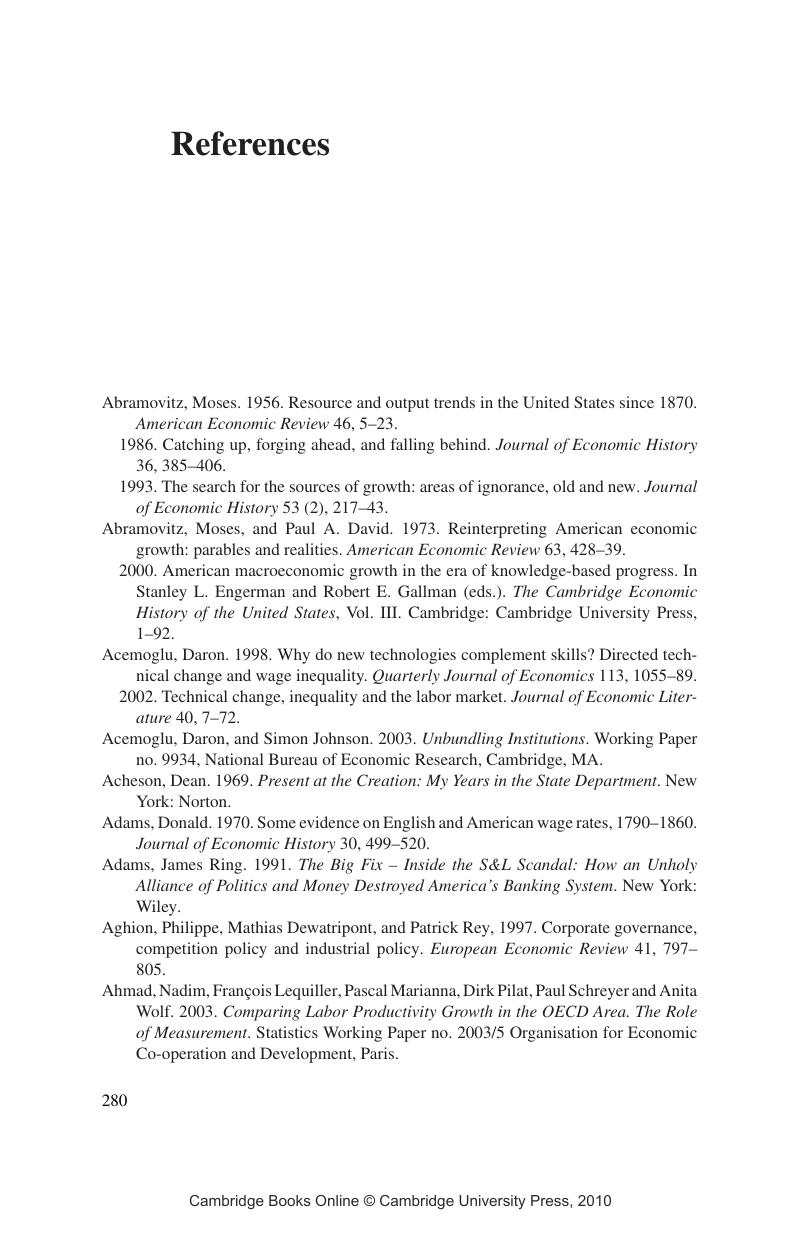Book contents
- Frontmatter
- Contents
- List of figures
- List of tables
- List of contributors
- Preface
- 1 Understanding the 1990s: a long-run perspective
- 2 The world economy in the 1990s: a long-run perspective
- 3 Managing the world economy in the 1990s
- 4 Europe: a continent in decline?
- 5 Technical change and US economic growth: the interwar period and the 1990s
- 6 General-purpose technologies: then and now
- 7 Productivity growth and the American labor market: the 1990s in historical perspective
- 8 The 1920s and the 1990s in mutual reflection
- 9 Bubbles and busts: the 1990s in the mirror of the 1920s
- 10 The 1990s as a postwar decade
- 11 What is happening to the welfare state?
- 12 The American economic policy environment of the 1990s: origins, consequences, and legacies
- References
- Author index
- Subject index
- References
References
Published online by Cambridge University Press: 14 January 2010
- Frontmatter
- Contents
- List of figures
- List of tables
- List of contributors
- Preface
- 1 Understanding the 1990s: a long-run perspective
- 2 The world economy in the 1990s: a long-run perspective
- 3 Managing the world economy in the 1990s
- 4 Europe: a continent in decline?
- 5 Technical change and US economic growth: the interwar period and the 1990s
- 6 General-purpose technologies: then and now
- 7 Productivity growth and the American labor market: the 1990s in historical perspective
- 8 The 1920s and the 1990s in mutual reflection
- 9 Bubbles and busts: the 1990s in the mirror of the 1920s
- 10 The 1990s as a postwar decade
- 11 What is happening to the welfare state?
- 12 The American economic policy environment of the 1990s: origins, consequences, and legacies
- References
- Author index
- Subject index
- References
Summary

- Type
- Chapter
- Information
- The Global Economy in the 1990sA Long-Run Perspective, pp. 280 - 304Publisher: Cambridge University PressPrint publication year: 2006



